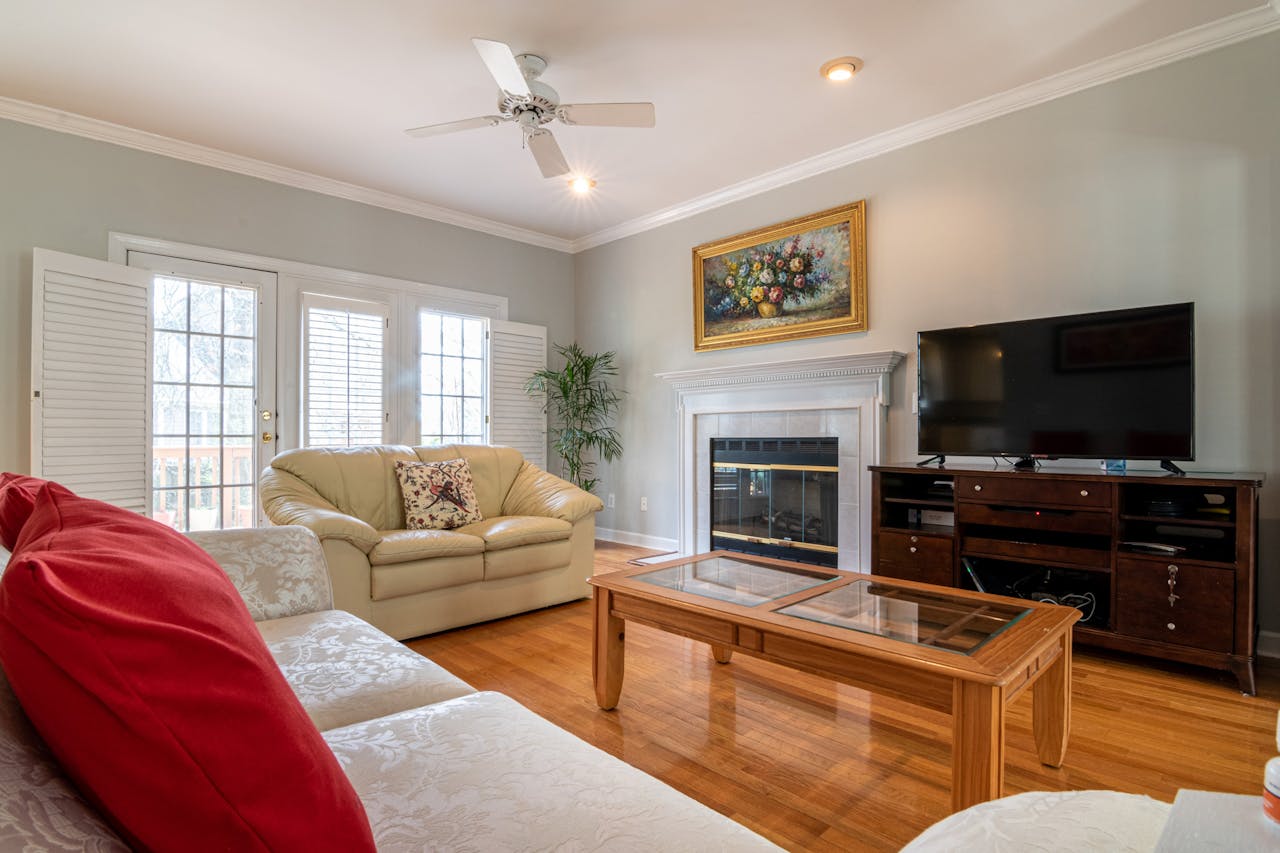Selling a House with Old Ceiling Fans and Lights

When you're prepping a home for sale, every little detail can shape how a buyer feels walking through the door. While many sellers focus on kitchens, bathrooms, and fresh paint, there's one part of the house that's often overlooked: ceiling fans and lighting fixtures.
You might think old fans and dated lights won't matter much, but they can send the wrong message to potential buyers. Here's what you need to know about selling your house when those fixtures are stuck in the past.
First Thing Buyers Look At (That You Might Not Notice)
Buyers tend to scan a room from top to bottom, especially during a showing. While you may not think twice about the ceiling fan that's been spinning since 1998, a potential buyer might see it as a signal that other updates have also been skipped.
Outdated fixtures suggest a house hasn't been modernized. It's not just about appearance; old lighting can affect the feel of the space. Dull, yellow lighting makes a room look older and smaller. Fans with wobbling blades or outdated brass finishes don't inspire confidence. These details may seem minor, but they contribute to the overall perception of the home.
Swapping Fixtures Can Be Quick and Cheap
Good news: you don't need to spend thousands to upgrade ceiling fans and lights. Many home improvement stores sell sleek, modern fixtures for under $100.
If your home is in good shape otherwise, just replacing the lights and fans can give it an instant refresh. A simple brushed nickel ceiling fan, or even a matte black one, can change the tone of a room. Recessed lighting or new LED flush mounts can brighten spaces and add appeal.
DIY-savvy sellers might even install these updates themselves, saving on labor. If you're unsure about electrical work, hiring a handyman for a few hours is still a small investment compared to how much it can boost perceived value.
What If You Don't Want to Replace Anything?
You're not alone. Some sellers just want to move on without repairs, replacements, or cosmetic upgrades. Whether you're on a tight budget, short on time, or just don't want the hassle, you still have options.
That's where selling to investors or cash buyers comes into play. These types of buyers are usually focused on the bones of the house, not the ceiling fans. They expect to make updates themselves and won't ask you to modernize every fixture before closing.
So, if you're thinking, Who would buy a house with outdated fans and lights? The answer is simple: plenty of people will, especially if you're pricing the home accordingly or working with flexible buyers.
Mid-Sale Renovation Risks and Realities
If you're in the middle of getting ready to list, resist the urge to start major changes unless you've planned. Updating all fans and lights throughout the house can take time, and if it's done halfway, it may backfire.
For example, if you replace fixtures in just one room, the rest of the house can feel even more outdated in comparison. Consistency matters. If your goal is to refresh, keep it simple and focus on high-traffic areas like the living room, kitchen, and primary bedroom. Think of lighting and fan upgrades as part of a broader presentation strategy, not a total transformation.
Buyers with Vision Will Still Make Offers
Some buyers, especially first-time homeowners, may plan to renovate after purchase. They might see your older lighting as a design challenge they're excited to fix themselves. Others, especially bargain hunters or flippers, aren't worried about fixtures at all. They're looking at price, structure, and location.
This is where working with cash buyers can be particularly useful. If you're in Baltimore and want to skip the open houses, agent commissions, and repairs, you might consider working with Houses For Cash Baltimore. These buyers typically make fast offers, no matter the condition of your fixtures or anything else in the home. It's a way to move forward without spending more money or time trying to make your home look like a magazine.
Small Upgrades vs. Selling As-Is: Which Makes More Sense?
There's no universal answer. If your house only has a few minor issues and you want top dollar, making a few small upgrades (like replacing lights and fans) can be a smart strategy.
But if your house has bigger issues plumbing, roof, foundation, etc., then investing time and money into changing a ceiling fan probably won't make a meaningful difference. In those cases, selling as-is might be more practical. It comes down to your goals, budget, and timeline. A real estate investor or agent can help you weigh your options based on your unique situation.
Simple Tips If You Want to Upgrade Anyway
If you decide to replace ceiling fans or light fixtures before selling, keep these quick tips in mind:
- tick to neutral designs: Avoid trendy or overly decorative styles. Simple sells.
- Match finishes where possible: If your doorknobs are silver, don't pick bronze lighting.
- Choose LED lighting: It's energy-efficient and gives a clean, modern glow.
- Check ceiling height: Low ceilings may not work well with hanging fixtures.
These small choices can help give your home a clean, modern look without making massive renovations.
Don't Let Fixtures Hold You Back
Whether you're ready to list or still thinking it over, old ceiling fans and light fixtures don't have to be dealbreakers. Yes, they may influence first impressions, but they're also one of the easiest things to fix or overlook, depending on who you sell to.
Sometimes, it's better to spend a little to make a room shine. Other times, skipping the upgrades and selling to someone who sees the bigger picture is the better path. Either way, you're not stuck just because your fans are spinning from another decade.
Published 8/5/25